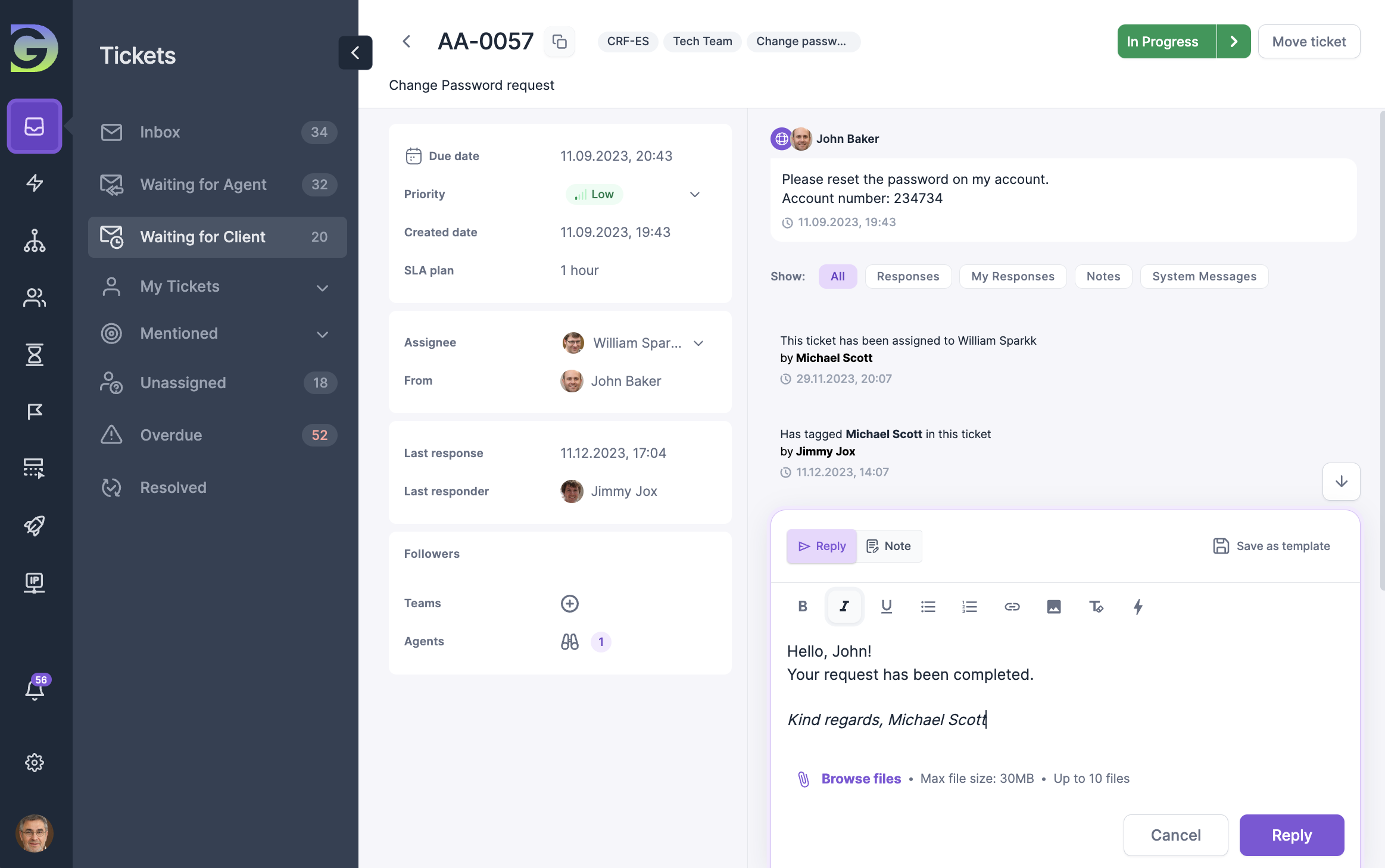Ticket management in Grogu Desk involves the systematic handling,
tracking, and resolution of customer inquiries, issues, or service requests.
Effective ticket management is crucial for delivering excellent customer
service, maintaining organizational efficiency, and continuously improving
support processes. Ticketing systems provide tools and features to streamline
these processes and enhance the overall customer experience.

Ticket Grid
Ticket Grid in Grogu Desk is a visual representation or display of tickets in a
tabular format. It provides an organized view of various ticket details,
allowing
users, such as support agents or administrators, to efficiently manage and
monitor
tickets.
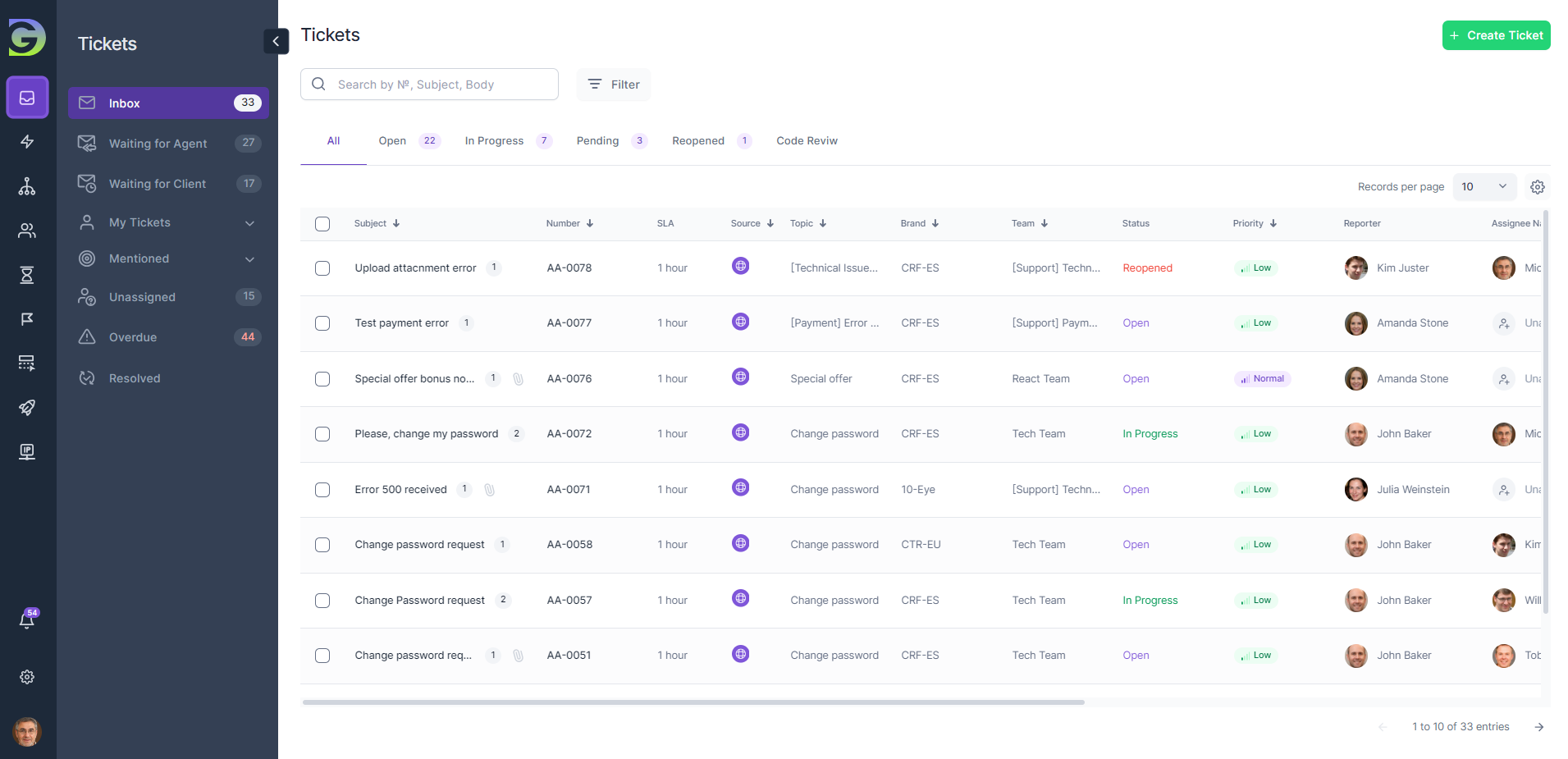
Here are key features and functions associated with a Ticket Grid in Grogu
Desk:
Tabular Display
• The Ticket Grid presents ticket information in a table format
with rows and columns. Each row represents an individual ticket, and columns
display
various attributes or details related to the tickets
Customizable Columns
• Users can customize the columns displayed in the Ticket Grid
to
include specific information relevant to their workflow.
• Common columns include subject, ticket number, source, topic,
brand, team, status, priority, reporter, assignee name, last replier, last reply
date, created date, due date, sla, action.
Sorting and Filtering
• Users can sort tickets based on different criteria.
• Filtering options allow users to display specific subsets of
tickets based on selected criteria.
Bulk Operations
• Admin, Support can perform bulk actions on multiple tickets
simultaneously, such as merge tickets, delete tickets.
Ticket Folders
Ticket Folders in Grogu Desk are organizational containers that allow users to
categorize and manage tickets based on specific criteria or attributes. These
folders enhance the organization, navigation, and accessibility of tickets
within
the system.
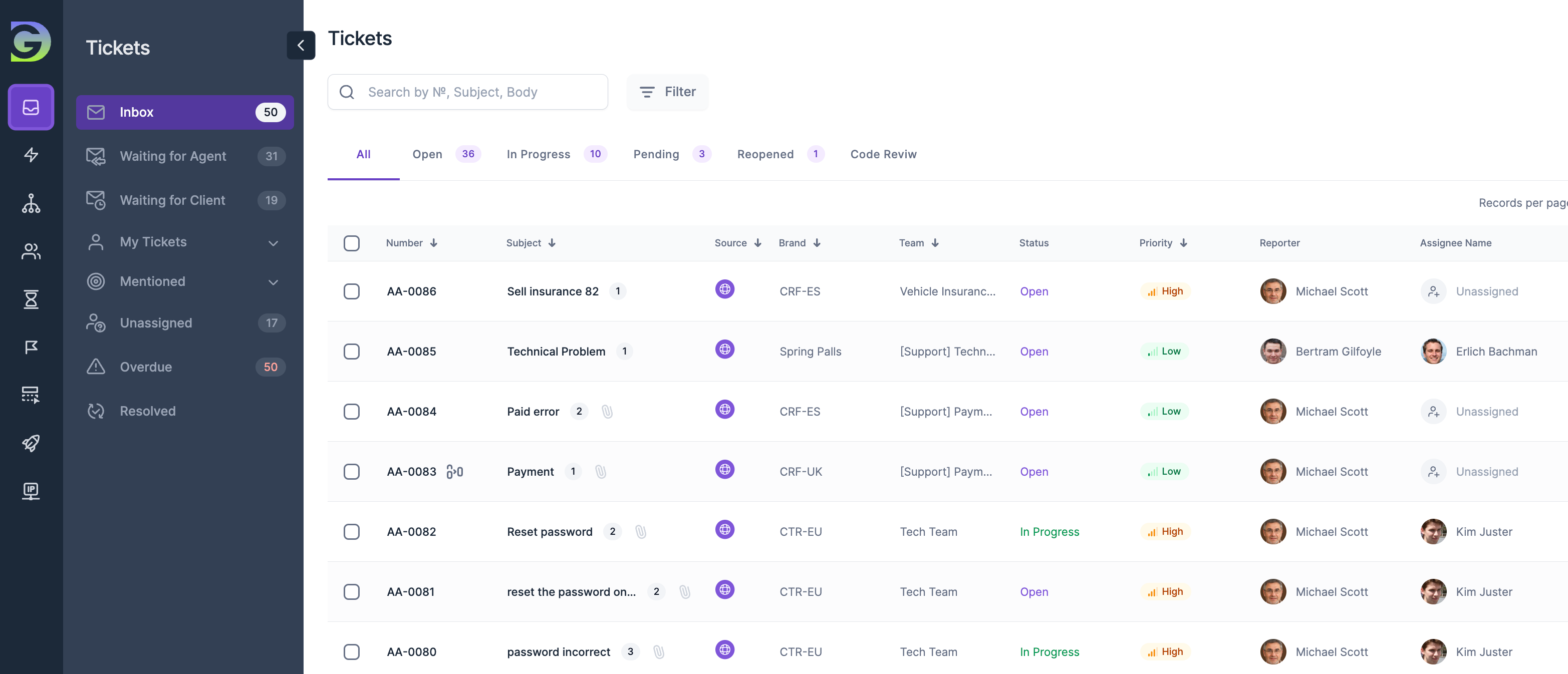
Here are the general Ticket Folders in Grogu Desk:
Inbox: contains all active (not resolved) tickets available to the user based on ticket visibility.
Waiting For Agent: displays all active (not resolved) tickets, where the last reply was from the Client.
Waiting For Client: lists all active (not resolved) tickets, where the last reply was from the Agent.
My Tickets
Assigned to Me: shows all active (not resolved) tickets assigned to the Agent.
Waiting for Me: includes all active (not resolved) and assigned to the Agent tickets where the last reply was from the Client.
Created by Me: displays all tickets created by the user.
Resolved by Me: presents all tickets in the final status ("Resolved"), where the user is a Ticket Resolver.
My Team Tickets (for Team Lead Role only): displays tickets created by team members of the led team.
Mentioned
Mentioned Me: contains all active (not resolved) tickets, where a user has been tagged.
Mentioned My Team: shows all active (not resolved) tickets, where a user’s team has been tagged.
Unassigned: lists all active (not resolved) tickets, where the assignee is not attached.
Overdue: presents all active (not resolved) tickets, where the SLA plan has expired.
Resolved: shows all resolved tickets, where the ticket status is equal to the final state ("Resolved").
Creating a Ticket
Users, such as customers or internal staff, create tickets to report issues, seek
assistance, or make service requests. Tickets typically contain information such
as
the nature of the problem, contact details, and any relevant attachments.

Ticket View Page
The Ticket View Page is a crucial interface where users, agents, support and
administrators can modify and update information related to a specific ticket.
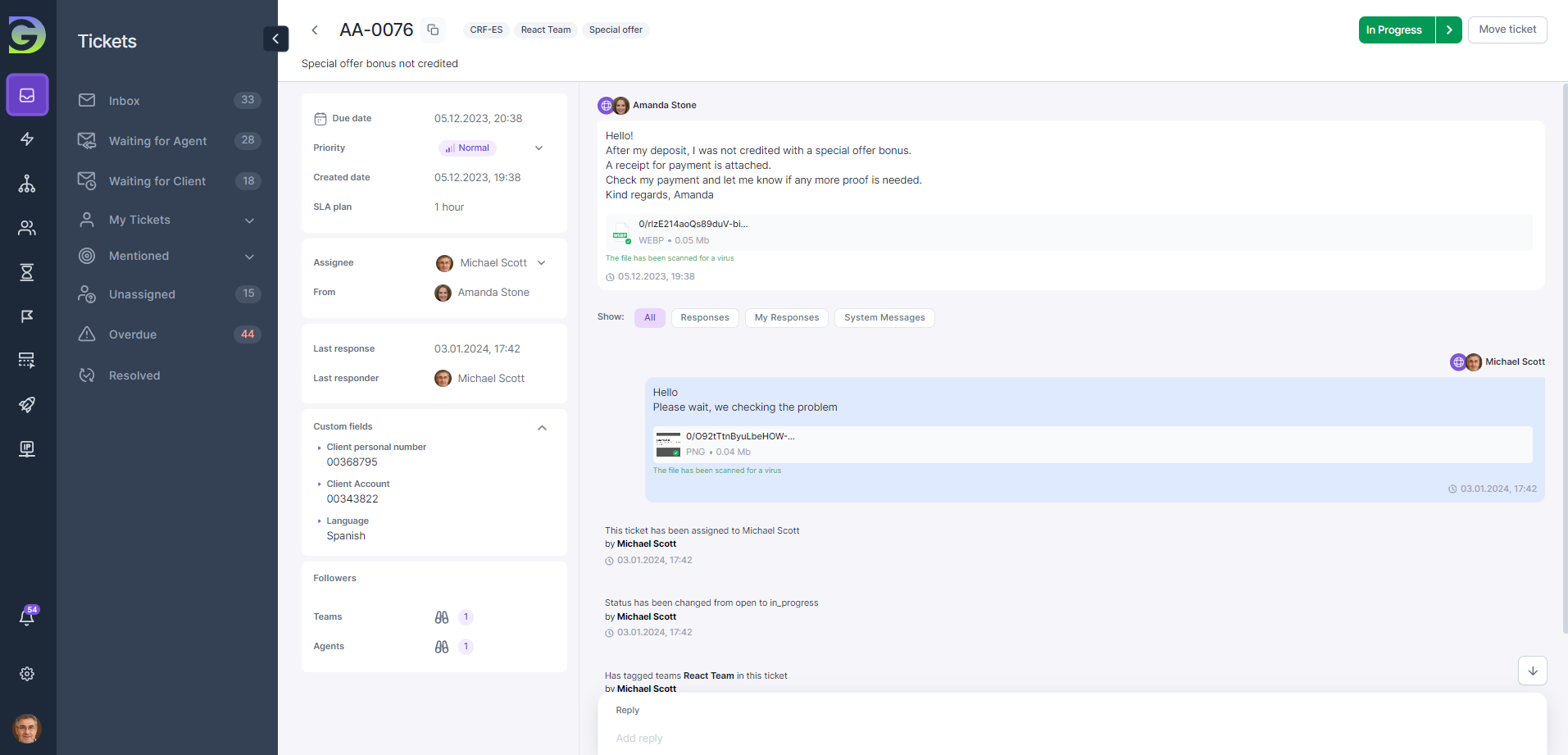
Status and Workflow
Users can update the status of the ticket to reflect its
current
stage in the resolution process (e.g., Open, In Progress, Resolved, Closed).
Priority
Agents can adjust the priority level (Low, Normal, High,
Emergency) of the ticket to indicate its urgency or importance .
Assignee
Team Lead or Agents can assign the ticket to a specific user
responsible for its resolution.
Custom Fields
Responses to custom fields conveniently displayed in a
dedicated
section labeled "Custom Fields", when a custom form is assigned to the ticket
topic.
This block provides quick access to responses related to custom fields, ensuring
that information collected through the custom form is easily visible and
accessible
within the ticket.
Mention Team/User
Agents can mention the team or user in the ticket for
additional
problem-solving. It's possible to mention the team or user in the Followers
block or
mention them in a ticket reply using the "@" symbol for mentioning a user and
the
"#" symbol for mentioning a team.

Ticket Reply
Сlients and Agents can communicate within a ticket through
the
convenient chat block. The reply text can be formatted using the editor,
allowing
users to enhance the clarity and style of their messages. Additionally, users
have
the capability to edit their own messages, providing flexibility and control
over
the communication process within the ticket. In addition, there is a quick
access
button for canned responses, streamlining the process of utilizing pre-set
replies.
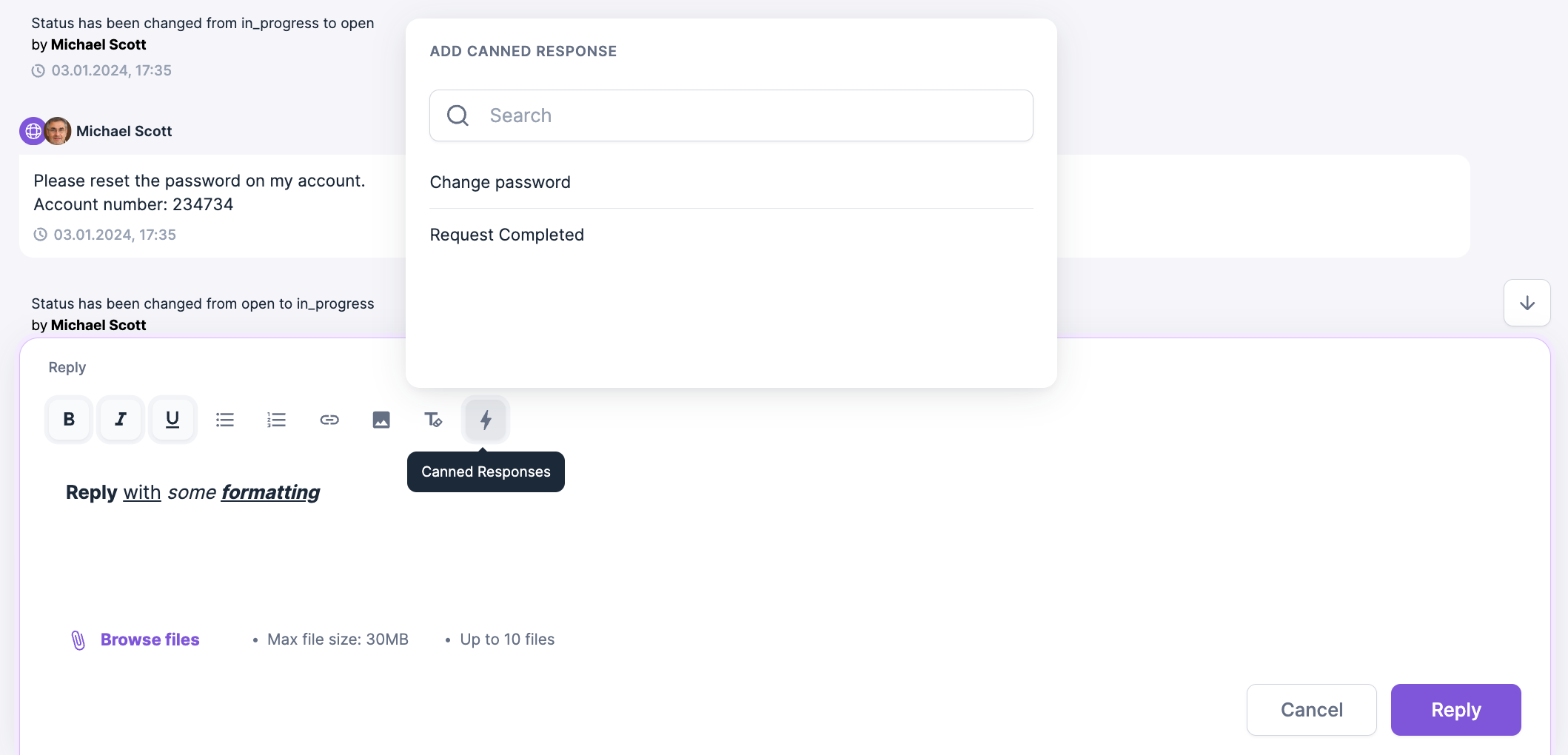
Internal Notes
You have the capability to create internal notes for sharing
knowledge among team members. It includes the option to generate a public note
visible to all ticket participants except its creator, fostering collaborative
knowledge exchange. Additionally, you can create private notes accessible
exclusively to the note creator, ensuring confidentiality when needed.

Attachments and Security
Agents have the capability to attach relevant files or
documents
to a ticket, facilitating the exchange of additional information or
clarifications.
You can add up to 10 attachments, with a combined file size limit of 30MB. All
attached files undergo antivirus scanning to detect vulnerabilities. In the
event of
a potential threat, users are promptly notified that the file may contain
security
risks.

